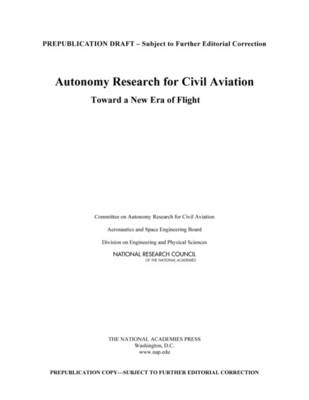The development and application of increasingly autonomous (IA) systems for civil aviation is proceeding at an accelerating pace, driven by the expectation that such systems will return significant benefits in terms of safety, reliability, efficiency, affordability, and/or previously unattainable mission capabilities. IA systems range from current automatic systems such as autopilots and remotely piloted unmanned aircraft to more highly sophisticated systems that are needed to enable a fully autonomous aircraft that does not require a pilot or human air traffic controllers. These systems, characterized by their ability to perform more complex mission-related tasks with substantially less human intervention for more extended periods of time, sometimes at remote distances, are being envisioned for aircraft and for air traffic management and other ground-based elements of the national airspace system. Civil aviation is on the threshold of potentially revolutionary improvements in aviation capabilities and operations associated with IA systems. These systems, however, face substantial barriers to integration into the national airspace system without degrading its safety or efficiency.
Autonomy Research for Civil Aviation identifies key barriers and suggests major elements of a national research agenda to address those barriers and help realize the benefits that IA systems can make to crewed aircraft, unmanned aircraft systems, and ground-based elements of the national airspace system. This report develops a set of integrated and comprehensive technical goals and objectives of importance to the civil aeronautics community and the nation. Autonomy Research for Civil Aviation will be of interest to U.S. research organizations, industry, and academia who have a role in meeting these goals.
- ISBN10 0309306140
- ISBN13 9780309306140
- Publish Date 23 August 2014
- Publish Status Active
- Publish Country US
- Imprint National Academies Press
- Format Paperback
- Pages 90
- Language English
